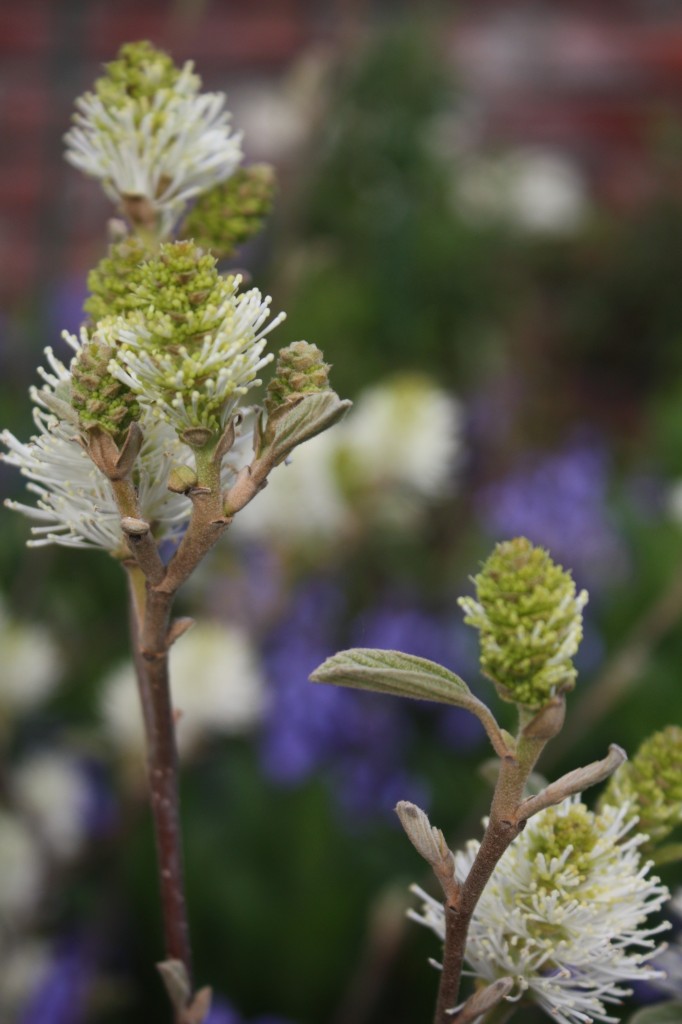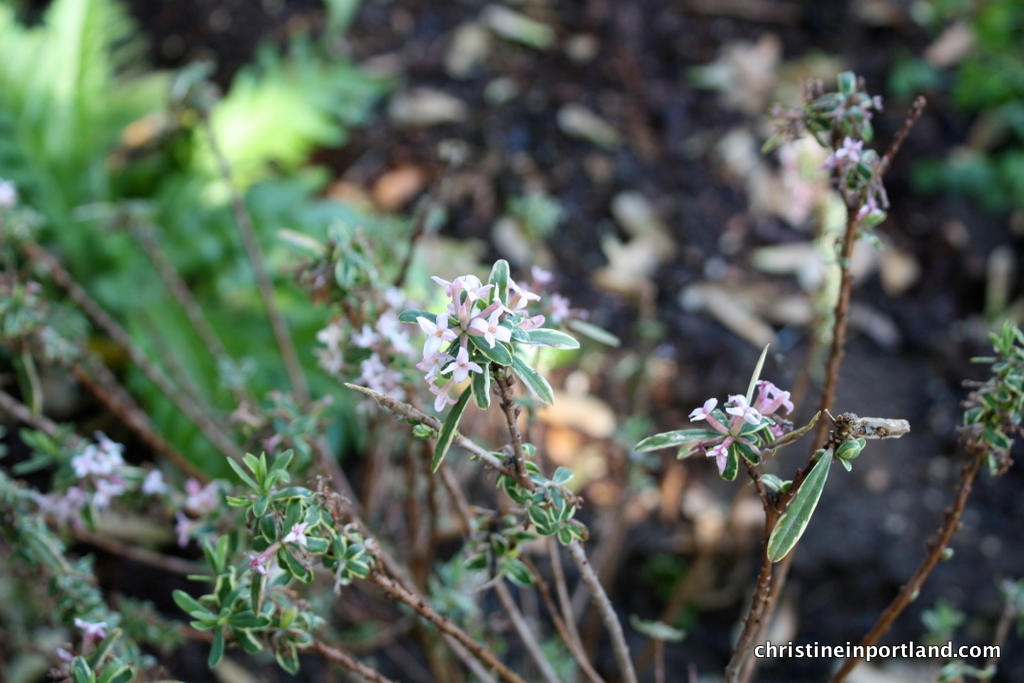A sample text widget
Etiam pulvinar consectetur dolor sed malesuada. Ut convallis
euismod dolor nec pretium. Nunc ut tristique massa.
Nam sodales mi vitae dolor ullamcorper et vulputate enim accumsan.
Morbi orci magna, tincidunt vitae molestie nec, molestie at mi. Nulla nulla lorem,
suscipit in posuere in, interdum non magna.
|
Thanks to Eddie Izzard, Brooks and I were on the lookout for penne all’arrabiatta on menus during our trip to Italy. We didn’t find it until we reached Rome, which makes sense, as it’s apparently a Roman dish. Why the Death Star would have it in their canteen is a whole different set of entertaining speculation. Having done no research other than watching humorous YouTube videos, we had no idea what to expect; the arrabiatta turned out to be a spicy tomato sauce that is simple and yet delicious. Simple and delicious happen to also be my benchmarks for weeknight meals, so upon our return, I set about recreating the arrabiatta sauce.
 Penne all'arrabiatta, devoured at Piazza Navona, Rome A few drunken Google searches later, I felt very uncomfortable about the recipes I was finding. Our foray to the Sorrento Cooking School had underscored that Italian sauces need not contain huge numbers of ingredients to be great, and my taste memory of what I had eaten several times in Rome didn’t match up with the onions, oregano, chicken, sugar (!) and other ingredients that were appearing frequently in online American arrabiatta recipes. Additionally, there was the matter of the spiciness. To what was it owed? One Roman version we tried had clearly used fresh red chilies of some unknown variety, but another probably had at least some dried chilies. Therefore, as I usually do, I ventured out to figure out a reasonable facsimile of the sauces we had enjoyed in Rome on my own.
Key considerations:
- The sauces we had eaten were pretty smooth in consistency, not chunky
- There had been no hint of onion, but definitely flavor of garlic
- Cheese, always Pecorino Romano, was listed on some menus as an ingredient
- Spiciness was rich and somewhat smoky
- Basil sometimes was a component, but sometimes not
- Flavors were bright enough that it was clearly not one of the “simmer all day” varieties of sauce
- The sauce was not tart, but sugar could not be responsible, please god no–more likely, the Pecorino Romano was helping counteract the acidity of the tomatoes
- We like spice, but prefer one that builds gradually over time rather than choking you up at the first bite
Here’s what we came up with. This is a recipe that can be easily prepared in 30 minutes or less using common pantry staples, and it’s also vegetarian! A word on your pasta choices. Penne is of course great, but we found that radiatori also worked well to capture the sauce. You do want a pasta with some ridges or other spots to collect tomato goodness, so I’d stay away from spaghetti, linguini, and other similar, smooth shapes for this particular recipe.
Penne all’arrabiatta
Serves two as a hearty entree, or four as a side
Ingredients
- Three cloves garlic, diced
- 3 T good olive oil
- 1 t crushed red pepper flakes (start with less if you don’t tolerate spice well)
- 1 t aleppo pepper powder (totally optional, and certainly not authentic, but it gives a long slow build of sweet spiciness without too much heat)
- 1 t salt
- 8 or so basil leaves, sliced into thin strips (optional)
- 1 14.5 oz can crushed tomatoes
- 4 oz dried pasta of choice (penne seems traditional, but others work fine…see note above)
- Heavily salted water in which to cook the pasta
- 1-2 oz Pecorino Romano cheese, finely grated and separated
- 1 T finely chopped parsely for garnish (optional)
- Bottle of tasty red wine of your choice, which you may commence to drink at any step of this process
Instructions
- Heat olive oil over medium heat in 1 quart or so saucepan while prepping garlic, spices, basil, and opening can of tomatoes. Everything for the sauce needs to be ready to go, as you don’t want the garlic to burn!
- Add garlic and chili powder(s) to hot oil and shake pan a couple times to mix. Cook until garlic is fragrant but not golden or browned, about 40 seconds. DO NOT OVERCOOK! It will make your sauce bitter and shitty.
- Add basil and give pan another shake or two.
- Immediately add tomatoes and salt. If you are afraid of splattering from the oil, wrap your arm in a towel beforehand, or, if you are lucky enough to live in St Johns, enlist the help of a passing methhead.
- In another medium pan, begin heating water for pasta according to manufacturer’s instructions. Salt VERY liberally. We are talking several tablespoons or more of salt, the far, far left of saltiness that Obama only remembers from his undergrad days.
- When sauce reaches a boil, reduce temperature to simmer. Stir occasionally. Taste, and adjust spices and salt as desired.
- When pasta water reaches a boil, begin cooking pasta to manufacturer’s specifications.
- Enjoy some wine. Pet your dog. Wax your upper lip. Why waste a few free moments?!
- As pasta reaches completion, find a colander in which to drain it. Allot a couple of minutes for this step if you have been guzzling the wine.
- Cause the sauce to become less chunky, either using a fork or masher, or using a stick blender.
- Drain pasta well, then mix the pasta in with the sauce.
- Mix in most of the grated cheese, reserving a tablespoon or so per person for serving.
- Serve this awesome concoction in large, flat bowls, garnishing with the remaining cheese and, if desired, the chopped parsley.
There you have it. More to come on our Italian adventures, soon!
Tonight, we observed an incident with TriMet that shook us to our very core–a sight we never thought we would live to see. I felt compelled to submit feedback at their website. Here it is, reproduced faithfully.
I am alarmed to report that the driver of this bus can only be an extraterrestrial, a new driver, or a non-union driver. This evening, while following behind this bus at a safe distance (lest you say we were tailgating and cannot possibly have seen what we saw), we observed your “driver” to not only slow down, but actually come to a FULL STOP at a red light while eastbound on Lombard. When this happened, we knew something must be wrong, as normally your drivers approach this intersection as they would an opportunity to limit population growth. Your driver is to be commended for following laws (this one time) that the rest of us observe all the time. Please commend them, even if this is normally a firing offense.
The innocuous looking Hyacinthoides hispanica grows everywhere around here. They are in bloom right now, and I’ll admit that they have pretty flowers. But I still hate them. They are quite invasive here in Portland, and hellishly impossible to get rid of. If torturing the zillions of new baby bulbs we get every year in front of the grown plants would make them stop trying to take over the yard, I’d do it.

I first noticed these “beauties” in 2009; our neighbors had them, and we had a few as well. That year I didn’t do much gardening until later spring due to having a broken foot, so they were a mere blip on the garden radar. That fall, we planted numerous tulips in the part of the yard with the bluebells, and in spring 2010, there were more bluebells, but they made for a nice show with the tulips. It was last year when I finally realized that something was terribly wrong. The bluebells had increased at least ten-fold in number, and they were coming up in parts of the yard that were quite distant from the initial (what I now realize was an) infestation.
Some Internet research revealed the unhappy truth: these bastard flowers spread both by bulb and by seed from their blooms. People with bad infestations consider doing drastic things like sifting their garden soil to get rid of the nascent bulbs, or simply carpet-bombing with Round-up. At this point, I’m good with irradiation.
I have pulled these things until I couldn’t even close my hands. The stems tend to break easily, leaving the bulbs to multiply in the ground. If you cut them down to the ground early (which I tried this year) they still send up flowers. They will outcompete tulips and other desirable plants, and it doesn’t take too much suspension of disbelief to imagine them as the villain in a fairy tale, stabbing their way up through a napping princess and cackling maniacally.
If you find this plant in your yard, oh Portland neighbors, do not pause to admire it. Recognize it for the enemy it is and attack it with fury. And please, for the love, do not deliberately buy and plant this thing. PLEASE!
The Fothergilla gardenii puts on a great fall show, but I love the clusters of weird-looking flowers that appear in April, with the leaves barely showing as of yet. This is an easy-to-grow, deciduous perennial shrub that grows quite slowly and is particularly outstanding in the fall and early spring.

Last summer, Brooks and I spent quite a bit of time thinking about adding plants to the yard that would result in more continuous blooms from early spring to frost. There are wads of graph paper stashed around the house that are basically hand-drawn Gantt charts of planting and blooming schedules; this, to my mind, is taking my project manager-y-ness to an extreme, but it worked. We did a lot of planting last fall, and some in January and February as well. In all, we have added poppies, Asiatic lilies, day lilies, hyacinths, phlox, ranunculus, irises, tulips, crocuses, dahlias, and other flowers that aren’t coming to mind right now…to a yard that was already well-planted with flowers.
The result has been fabulous. We have had flowers since late January, crocuses by the hundreds, and months of tulips. To balance out the number of bulbs that die back and leave blank spaces, we have also added numerous new flowering plants this spring: a beautiful camellia snagged at Portland Nursery one beautiful February day, a Daphne ‘Carole Mackie” for scent and floral interest in mid- to late spring, an Endless Summer Hydrangea (Blushing Bride) and a couple of Edgeworthia chrysanthae, which stopped me in my tracks with their lovely light yellow blooms in late winter. The incomparable Meg de Hass van Dorsser of Margaret’s Enchanted Gardens, Ltd., helped immensely with recommendations. She also helped legitimize my Hydrangea longings to Brooks, who sort of hates them. And by “sort of,” I mean truly detests them.
Following are some photo highlights. I’ll write more about some of the specific areas we have focused on at a later date.
Irises
Our first irises opened in early March, which actually scared me a bit. That seems too early.

Now, we have many in bloom. Most of the irises we have are the light purple color shown first, as luck would have it:



Daphne “Carol Mackie”

Edgeworthia chrysantha (aka Chinese paper bush)

Garden supervisor, Canis lupus familiaris (common name: Brooks Jr.)

With the exception of the dog’s photo, all of the images are from today–what beautiful weather we have been having!
I am categorically in favor of any new eateries with a full liquor license setting up shop in St Johns. Despite that, I have mixed feelings about The Fixin’ To. This highly Portlandized purveyor of Southern-esque food opened a few months ago, and we have been in several times. This is despite the fact that their website doesn’t bother to list their business hours. No, you must delve into their blog or Facebook fan page to find such irrelevant information.
The first time, we left in despair of ever obtaining not just food or drink, but eye contact with anyone who worked at the establishment. This was during their first week of business. They eventually compensated for this hipster habit of ignoring non-hipsters with some signage indicating that one should order at the bar.
Our return visits have gone better. While we lack that ironic panache that would likely get us quicker service at the bar, we have successfully sampled several of the items on the fairly short menu–chicken dumplings (totally decent), Frito pie (vegetarian and meat versions–also decent), Rotel (good, if not like any I ever had in the South) and the weekend biscuits and bacon gravy (nauseatingly awash in butter, in a bad way, and made with bacon that reminds me of the paper-thin slices of a meat-like substance available for breakfast at any Holiday Inn Express.)
A menu with a few more options would probably work in their favor. Perhaps an expansion will happen in time. The food is basically ok, if not really Southern. But it’s a Portland twist on Southern, so it makes sense.
It’s ultimately the hipster vibe that rubs me the wrong way. I have an innate dislike of hipsters anyway, but the Portland variety of hipsters who provide food service are particularly annoying. The total lack of acknowledgment when you arrive is one of the key failing I associate with their ilk. When you couple that with the fact that Travis, Ben, and crowd at Leisure, just a couple blocks away, can remember your name after a couple visits and always at least make eye contact when you show up, no matter how busy they are, The Fixin’ To falls short of the St Johns standard.
Too bad. I was very ready to like the place.
This pearl of wisdom comes straight from the lips of Randy Plew, owner of recently minted Plews Brews in St. Johns. The space Plew’s Brews occupies, which formerly housed Plew’s last endeavor, a grocery store, seemed to transform practically overnight into a beer store last month. This can only be a good thing, especially given that Plew sells growlers of a variety of very decent beers (HUB, Ninkasi, and others were on tap today), for a bewildering $7. Build-your-own six packs from a limited but good supply of bottled beer set you back $9.
We dropped in today chasing a rumor that they would be selling beer making supplies shortly. This proved to not be exactly the case. (We can go to Kenton for that, but maybe, one day….) Still, we enjoyed a couple of pints in the purple and green setting, and came away with a growler of IPA, laying out $13 in the process.
It’s pretty cool to see a business you think will work starting from the ground up. The place is not yet fully stocked, and a number of displays are completely empty. Rumors about future serving of food abound. I think Randy is on to a great idea, and I can’t wait to see what he does with the place.
8409 N. Lombard
Portland, OR 97203
It took a while for our tomatoes to really hit their stride, but at the end of August, they started ripening a thousand a minute or so. Since the whole goal of learning to can was to do something with our tomatoes, this was very exciting.
Marinara sauce is a huge part of that goal. We both enjoy simple, quick dinners involving pasta, cheese and tomato-based sauce on weeknights. It cuts into our Stargate: Atlantis viewing time much less than a full-blown meal involving 27 pans and a blowtorch. So why not make a sauce that was so tasty, it could stand on its own with some whole wheat pasta? Why indeed.
I scoured my favorite canning book, The Ball Complete Book of Home Preserving, but it had nothing that looked exciting enough. Surely having both onions AND garlic in a tomato sauce does not result in instant death-by-botulism. It was my massage therapist, Natalie, who eventually pointed me the right direction with a link to Canning USA. Warning: their html will hurt your eyes and heart.
Since I have both renegade canning and mathematical adequacy in my genes, I couldn’t help but a) notice some non-death-inducing improvements that could be made (like caramelizing the onions and adding dried oregano), and 2) figure out that their input/output claims were nonsensical. You cannot gather that quantity of ingredients, reduce it by a third, and have 9 quarts of sauce.
So, here’s what I came up with. Tomato quantity and lemon juice are increased. I feel in my heart that it’s acidic enough to be safe, but, you know. Make this at your own peril. If the USDA kicks your door down, don’t come crying to me.
Marinara sauce
Yield: 9 quarts
Active work: 2 hours
Total time: 6.5 hours+-
Ingredients:
1/2 c olive oil
3 lbs white or yellow onions, chopped
20 lbs tomatoes Continue reading Canning recipe: Marinara sauce
 Our own canned marinara sauce and plums Lately, most of my calls with my mom include her telling me once or more that she’s so glad ONE of her daughters learned how to can. Take that, four sisters! I win–mom likes me best! I have put her instruction to good use, unlike certain people. </evil laughter> While more canning will certainly happen as fall progresses, we currently have some 50+ jars of food we have canned:
- Blackberry jam (with blackberries from parents’ yard!)
- Blueberry lime jam (with blueberries I picked!)
- Peach + Maker’s Mark butter (with peaches from nearby Sauvie Island)
- Carrots and garlic (from our garden)
- Whole peaches (picked them off of Germantown Rd with neighbor Liz)
- Marinara sauce (with tomatoes and herbs from our garden; relax, methtards didn’t take ALL the tomatoes)
- Plums in vanilla syrup (plums from parents’ trees)
In the process of preserving this modest array of food, I have learned a bit.
- Canning will take at least an hour longer than you were hoping, and more if you have someplace to go afterward
- It’s possible to dirty every dish and pan in the kitchen, twice, before you’re done
- Standing for hours+warm summer day+avoidance of bottle-breaking drafts+water heating+hoiking carrots out of the ground=exhaustion and a marked lethargy surrounding spending any additional time in the kitchen
- Silicone oven mitts are worth their weight in carbon fiber
- Canning peaches is not worth the work. That’s what the freezer is for.
- Opening the second bottle of wine around the time you start processing jars is fine. Opening the second bottle of wine while you are still cutting fruit up is just plain dangerous.
- When you freeze tomatoes, they roll clinkingly around like billiard balls in the freezer if you disturb them
- Speaking of the freezer, it’s a faster way of preserving *some* kinds of food, if you don’t have time to can and do have space to freeze. It is, however, far less satisfying.
- I already knew I had a super fabulous boyfriend, but I learned an additional great thing about him: he’s an awesome canning accomplice.
The highs so far have been basically everything but the peaches. Those bastards were a nightmare. The variety we picked was extremely fragile and was bruised by the time we got home from the orchard. They proceeded to disintegrate in the jars when we canned them an hour or so later. AND they floated to the top of the jars. There was no way to smash them into the jar without macerating them, and with the specter of my mom’s perfect canned peaches hanging over me, I couldn’t do it. For a nice winter project, I’ll knit the jars some skirts so they look less…exposed.
As promised, here’s Brooks’s perspective on bottles, deposits, and meth heads.
——————
So, thank you to Ms. Christine for letting me post on her blog. I don’t often have blogworthy thoughts, but here’s one.
[Editorial comment: this is not factual. On any day of his choosing, Brooks could quit being a lawyer and become a world-class blogger.]
The Oregon Bottle Bill. Oregon was at the vanguard of recycling when it devised a system to create an economic incentive to recycle glass beverage bottles. Buy the beverage, return the bottle to the merchant, get a nickel. At the time curbside recycling was nearly non-existent and the system worked.
You’d bring your bottles (and later cans) to the store and the attendant would count them, give you a slip and you’d shop, turning the slip in as part of your payment for your groceries. Lovely.
In its implementation in the urban areas of Oregon (which contain the significant majority of Oregon’s population) it is broken and should be abolished. Continue reading Op-ed thoughts on the Bottle Bill from Brooks
|
|










